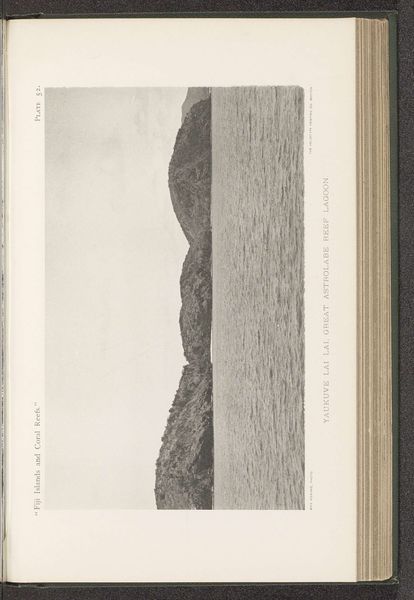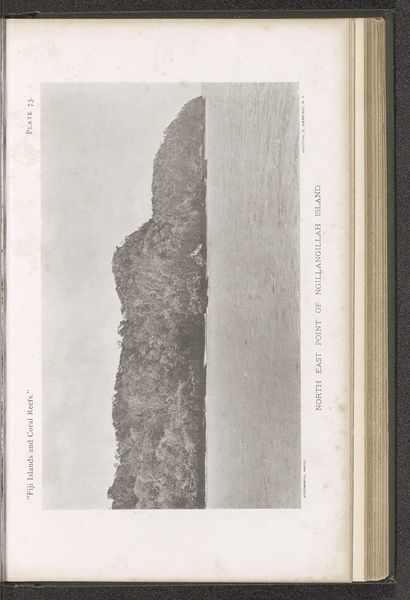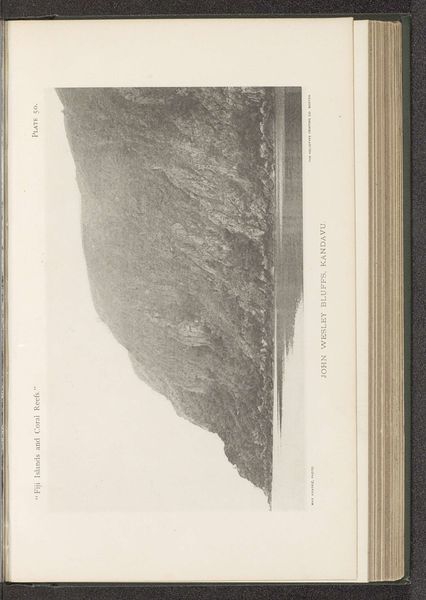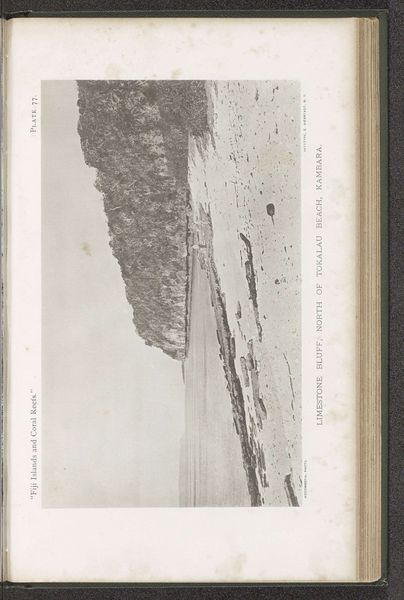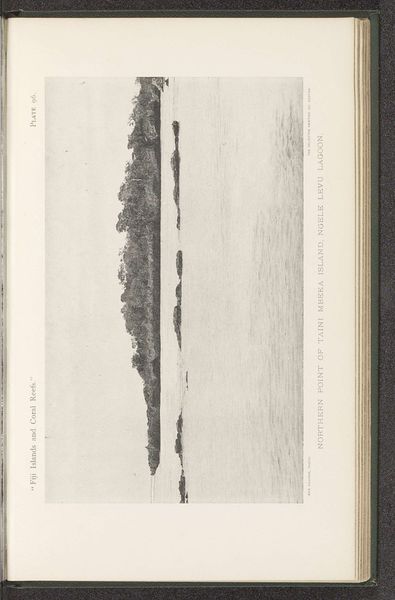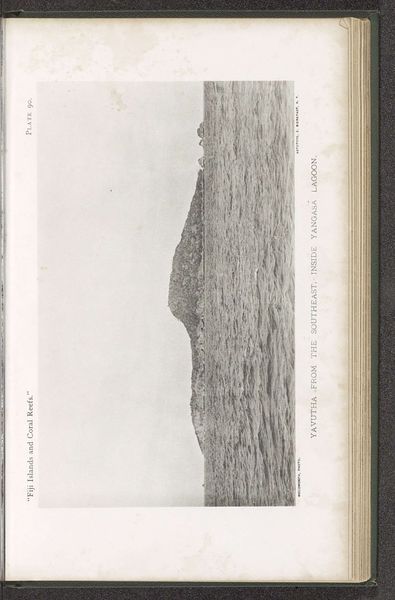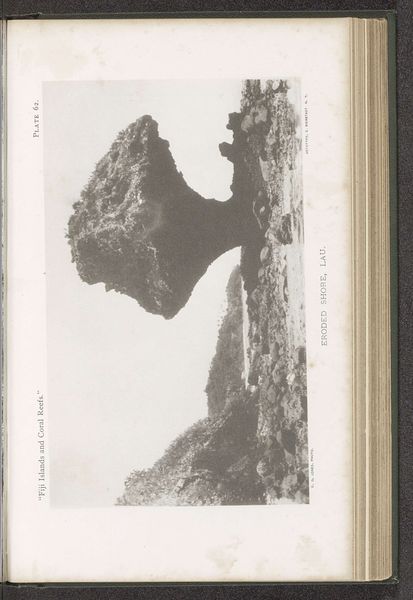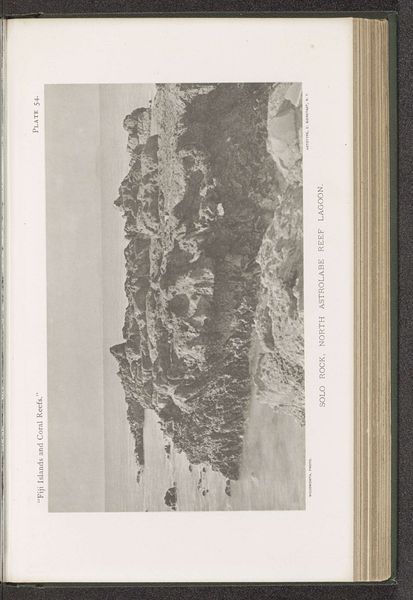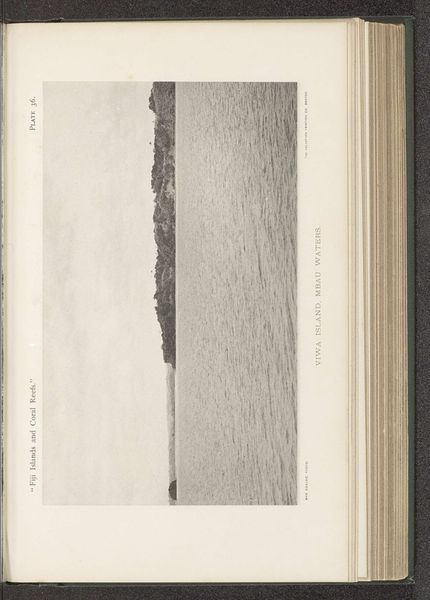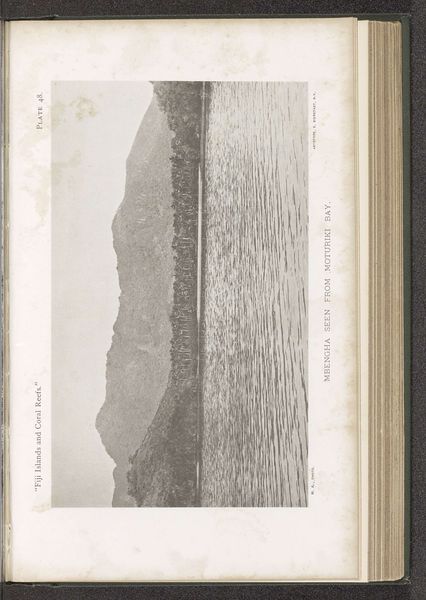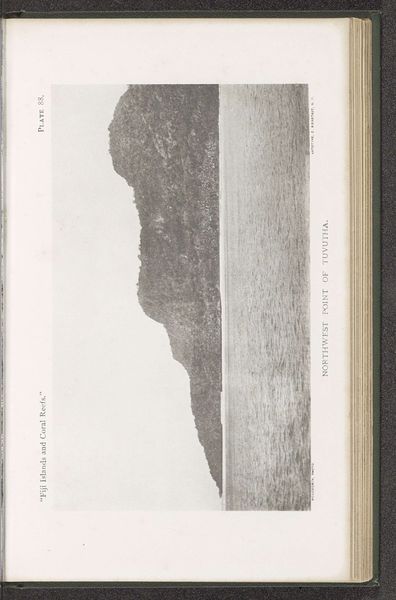
print, photography, gelatin-silver-print
# print
#
landscape
#
photography
#
ocean
#
orientalism
#
gelatin-silver-print
Dimensions: height 108 mm, width 179 mm
Copyright: Rijks Museum: Open Domain
Curator: Immediately, the somber stillness of the gelatin-silver print is striking. The near-monochromatic palette evokes a profound sense of solitude, an almost untouched landscape. Editor: This photograph, titled “Gezicht op Yangasa Levu,” or “View of Yangasa Levu,” was captured by Maximilian Agassiz before 1899. It is a stunning example of landscape photography printed with the gelatin silver process. Agassiz provides us with this serene shot of Fiji. Curator: I think we need to look at the impact of photographs like these at the turn of the century and now, given their ties to Orientalism. What narratives were promoted, and whose stories are absent from these idealized landscapes? Who were the audiences and what kind of gaze does that position on local inhabitants? Editor: I think that's important. Contextually, photographs such as this were widely circulated and reproduced for Western audiences keen on visualizing distant lands. Consider the rise of tourism and colonialism during that period and how images actively promoted certain visions of islands to promote exoticism. What was left behind in this image that can also represent that narrative, aside from its technical merits of landscape shot. Curator: And how the local people are reduced as part of the backdrop, rarely centered or acknowledged with agency. Even within an artistic rendering, these factors play a large role on how we now view these historical documents, this form of visual recording from then and today. The aesthetic beauty shouldn't excuse critical inspection. Editor: Precisely. What do you see now, viewing it under this context? Does the quiet stillness change when realizing how those represented often lack a voice in these documents? Curator: Now it invokes both serenity and also discomfort. The untouched beach feels somewhat haunting when thinking about the people not given agency in these documentations of their homeland, captured through a particular gaze that carries all of those colonial intentions and prejudices. It prompts us to question the seemingly harmless portrayal of exoticized environments. Editor: Indeed. Agassiz's "Gezicht op Yangasa Levu" offers a space to consider photography's role, beyond just representation.
Comments
No comments
Be the first to comment and join the conversation on the ultimate creative platform.
